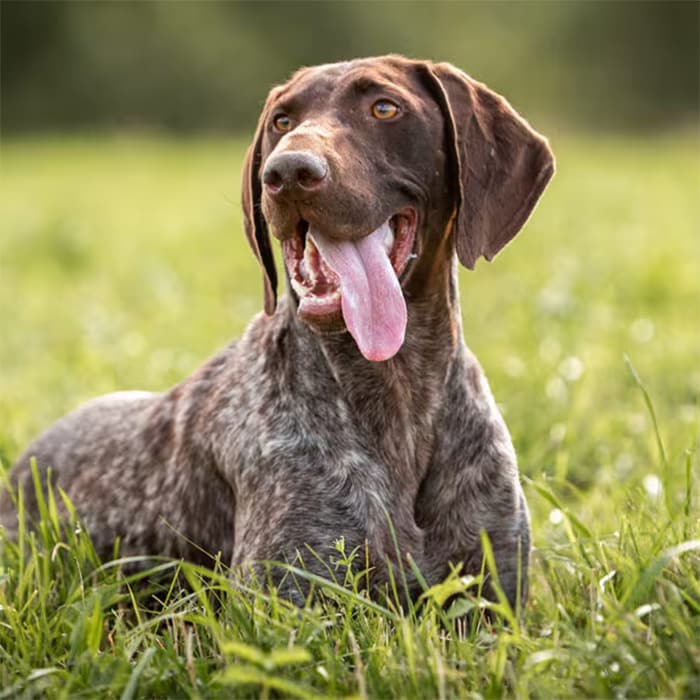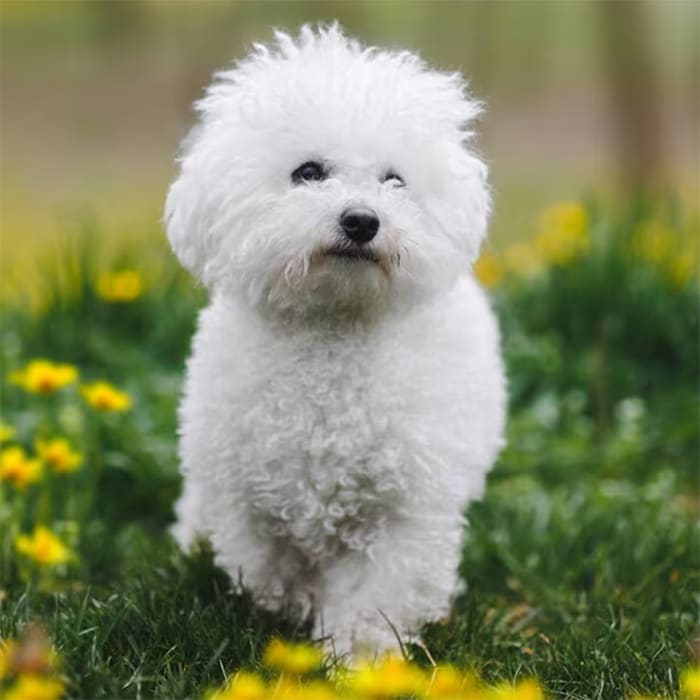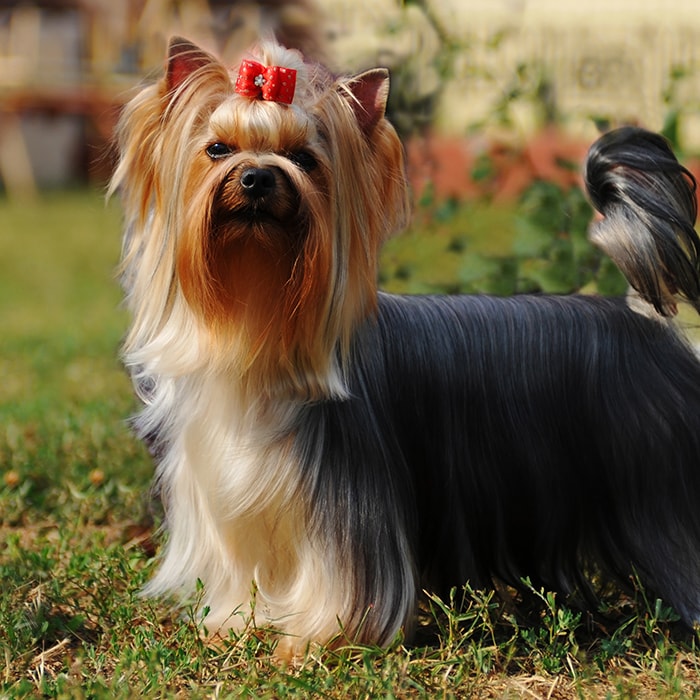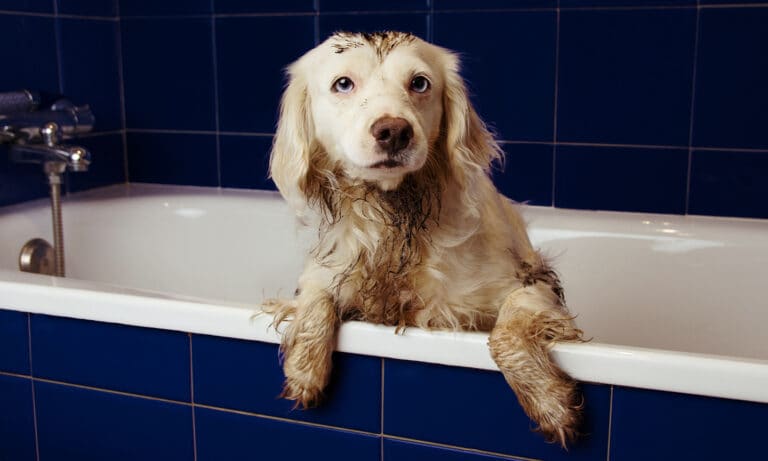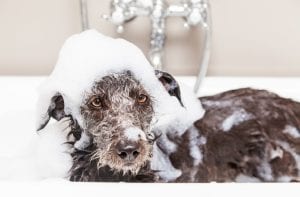Best Dog Brushes and Brushing Methods for Your Dog’s Coat Type
As mentioned, you’ll want to use different brushing methods for different coat types. Using the wrong brush could damage your dog’s fur, and improper technique could cause mats or skin irritation.
To find the best brush for your dog, take a look at the different coat types below and the suggestions for brushing those types of dogs.
How To Brush Dogs With...
Brushing Dogs With Short, Smooth Coats
The most popular dog breeds with short, smooth coats include:
- Bulldogs
- German Shorthaired Pointers
- Dachshunds (smooth coat)
- Boxers
- Great Danes
For pet parents with dogs who have short hair, use rubber brushes, like the KONG® Dog ZoomGroom, at least once a week. Run it along the fur using medium to firm pressure.
Dogs with smooth coats typically don’t shed much, but if your dog is the exception, you can use the FURminator® Short Hair Dog Deshedding Tool no more than once a week. Use short, gentle strokes, and don’t go over the same spot more than three times; you can cause bald spots or brush burn.
Brushing Dogs With Short or Medium Double Coats
Dogs with short or medium double coats include:
- Labrador Retrievers
- Pugs
- German Shepherds
- Corgis
- Huskies
For dogs with short double coats, like Labrador Retrievers and Pugs, use a rubber brush, like the KONG ZoomGroom, at least once a week—and as often as every day using medium to firm pressure.
If your pup has a medium double coat, like German Shepherds, Corgis and Huskies, start with a slicker brush, like the Evolution® Self-Cleaning Dog Slicker Brush. Use medium pressure to brush in the direction of fur growth.
To help reduce shedding, use a metal comb, like the Andis Steel Comb, or an undercoat rake, like the ConairPROPET™. Pull the comb or rake through your dog’s hair, being careful not to pull too hard when you reach a clump of fur.
When the fur really flies, you can use a deshedding tool, like the FURminator, no more than once a week. Use light pressure, and don’t go over the same spot more than three times.
Brushing Dogs With Long Double Coats
The most common dog breeds with long double coats include:
This coat type is tricky because it sheds a lot and can get matted. A few times a week, use a slicker brush, like the Evolution Self-Cleaning Dog Slicker Brush, to remove undercoat and prevent mats.
Once a week (and more often during shedding season), pull a rake, like the ConairPROPET, through your dog’s fur to remove more undercoat. Up to once a week, you can also use a deshedding tool, like the Pet Republique Dematting Rake. Use short strokes with medium pressure to get out more undercoat than the slicker brush and rake can manage.
If your pooch has mats you can’t brush out, use the Master Grooming Tools Dematting Tool to gently pick them apart, from the top of the mat to the bottom. Keep a comb between the mat and your pup’s skin, as you can cut your dog if you aren’t careful! Let a dog groomer shave mats that are next to the skin.
Brushing Dogs With Curly or Wavy Coats
Popular pups with curly or wavy coats include:
- Poodles
- Bichon Frises
- Portuguese Water Dogs
- Havanese (some)
- Goldendoodles
Curly and wavy coats mat easily and require daily, regular brushing unless you keep your dog’s coat clipped short. Every day, use a slicker brush, like the Evolution Self-Cleaning Dog Slicker Brush, followed by a metal comb, like the Andis Steel Pet Comb.
The key is to make sure you’re brushing down to your dog’s skin. Here’s how:
- Start at your pup’s feet, lift a section of hair, and brush underneath the raised hair. Move your way up your dog with this technique.
- You can then use the metal comb to check for mats and tangles you missed with the brush.
You should be able to get the comb through all your dog’s fur. For mats you can’t brush out, use a dematter, like the Master Grooming Tools Dematting Tool, to pick them apart gently. This tool is sharp and can cut your dog, so keep a comb between the mat and your pup’s skin. If you notice mats that are close to the skin, enlist the help of a professional groomer to shave them.
Brushing Dogs With Straight Coats
Dog breeds with straight coats include:
- Yorkshire Terriers
- Miniature Schnauzers (some)
- Shih Tzus (some)
- Havanese (some)
- Maltese (some)
Brushing Dogs With Wire Coats
Some of the most common dog breeds with wire coats include:
- Dachshunds (wire-haired)
- Miniature Schnauzers (some)
- West Highland White Terriers
- Cairn Terriers
- Airedales
When Should I Brush My Dog?
We’ve already talked about how often to brush each coat type, but there are other times you’ll want to brush your pup too.
Before and After a Bath
Did you know that water makes mats worse? Always brush your dog and remove mats before bathing them. You’ll also wash less hair down the drain this way.
After the bath and once your dog is dry, brush them again to remove any knots, prevent mats and help them look their best.
During Shedding Season
Brushing a dog becomes even more critical during shedding season, which usually takes place during the spring and fall months.
Brush your dog daily with a rubber brush or slicker brush, then once a week with a deshedding tool that suits their coat type.
Why Is Brushing a Dog Important?
There are many reasons brushing a dog is a crucial part of giving them the best life. Brushing your dog:
- Prevents painful mats from forming
- Reduces shedding
- Allows you to spot lumps, bumps, parasites and skin issues
- Keeps your pup looking their best
- Is a wonderful bonding opportunity
How To Keep Dogs Calm During Brushing
Some dogs don’t like to be brushed, especially if it’s a new experience. The key is to start small and use plenty of treats.
Allow your pup to sniff the brush, then give them a small treat. Brush a few strokes, then reward with another treat. Gradually increase the length of time you brush your dog before rewarding them, and finish with a big treat, like a bully stick, when you’re done.
More on dog grooming:
Share:


